Well not really many 'Miles' at all, only 140kms today, travelling west on the 'Warrego Highway'. The caravan park we stayed at in Miles was just across the road from the Visitors Information Centre and the 'Miles Historical Village'. So we decided we would wander over about 9.00am, have a look for an hour and be out of the park by 10.00am. Good plan! But we got talking with the chap that works at the 'Visitor Information Centre' on weekdays, and he was able to tell us so much about the area. At 9.40am we decided we had better go and move the caravan from the park, not that it should have been a problem! They weren't that busy, but we thought we had better do the right thing! So after a cuppa and parking the caravan on the side of the road, back we went. The cost was $12.00 each with our seniors discount. Kerry said "Some people leave when they are told the price, but it costs a lot to maintain and run the village". He didn't need to justify or convince us that such tourist attractions cannot be provided for nothing! The village was so well done.
We were impressed that so many old buildings have been moved there, restored and being used to tell the history of the area. Like the 'CWA Centre' of a branch that had closed some years ago. When you walked into the centre everything was as it would have been on meeting days. Nearly two hours later we left the 'Historical Village'.Miles has a population of approximately 1100 and the Historical Society was established in 1971. The town was originally named 'Dogwood Crossing', named by Leichhardt in 1844. In 1878 it was changed to Miles, honouring an early pioneer of the area, who was 'Queensland Colonial Secretary' at that time. The first President of the Historical Society proposed that construction of a 'Historical Village Street' within the grounds, be the aim of the Society. Plans were drawn up and they have done a wonderful job in creating a very interesting tourist attraction. The project has grown over the years as another building as been sourced, transported and restored. Similar to the village we visited at Swan Hill, but that one required lots of volunteers.
This one has the various displays set up in rooms, with mesh to keep people away from the exhibits. I asked Kerry about the cleaning! It looked like a massive task. They have a paid person come in twice a week and a groundsman is paid for one day a week. Should there be a need for a major clean due to a dust storm or similar, the volunteers rally and assist. A number of the businesses within Miles have closed their doors over the years. The buildings have been relocated to the Historical grounds and the history is very much alive. I loved the fact that the 'Jimbour CWA Centre' has found a new resting place in Miles. The 'Red Rose Cafe' building is used for any catering that is done at the precinct. Such a great idea.One building had information on the artesian basin and the flooding of the small town of 'Condamine', which is a little south of Miles. There was also a room on 'Landcare' and the story of the early farmers nearly being ruined through prickly pear.Kerry said it all works well.
Now they have the Info Centre at the front of the complex and a paid person for 5 days a week, it means the 'Historical Village' is open for 364 days of the year. The volunteers cover the weekends. We also had quite a discussion on the 'Western Downs Regional Council' which is now the Local Government entity for the region. The funding for the Info Centre is through the Regional Council. The 'Western Downs Regional Council' office is in Dalby. Locals don't like it, but he is sure that in time it will work itself out and he feels it will bring benefits to the area. He said "If they still had their local council, they would not have been able to handle all that has been necessary with the coal seam gas project, over the last few years".The majority of the coal seam gas wells are to the south of Miles, in an area stretching through to Surat. So we will possibly see more of them on our way to 'Lightning Ridge'. There was a map showing where the gas pipelines have been laid through to Gladstone.
He also told us that the huge dams we had seen near Dalby are used for catchment and then to irrigate crops when the crop needs a drink. They grow wheat or barley in the winter and sorghum in the summer. The ground has been levelled at great expense, so they can release water to the irrigation channels and then the crops are gravity watered. No wonder they looked so good.
We arrived at Roma about 2.00pm. We have a site up the back of the park and we hope that the trucks won't be as noisy as they were last night in Miles. The road was on one side of us and the railway line on the other side! At 3.45am we thought the train was coming into the caravan. When we said to Kerry about the train, he said "We were definitely unlucky! Theses days they only have one train a week and it is the passenger train from Charleville"! The railway line east of Miles is now used entirely for coal. At the moment they sometimes rail coal seam gas materials to the service area, just east of Miles. That is as far as freight trains go west these days. More history for the blog! 14 photos

 Roma, Queensland, Australia
Roma, Queensland, Australia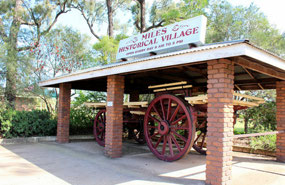
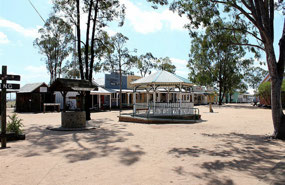
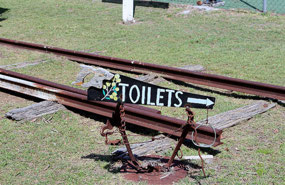
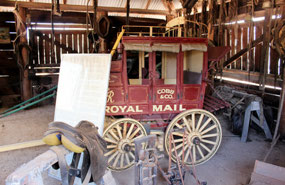
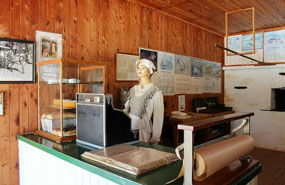

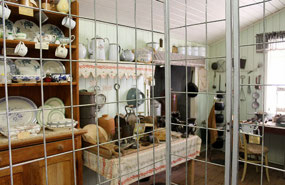
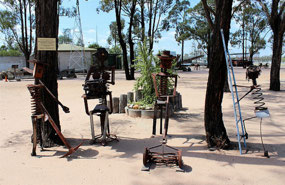
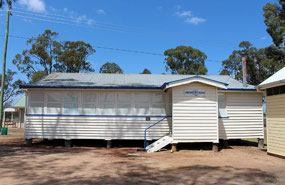
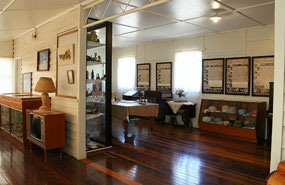
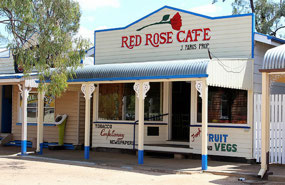
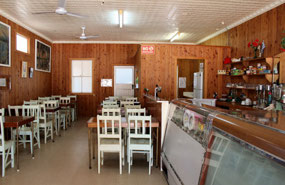
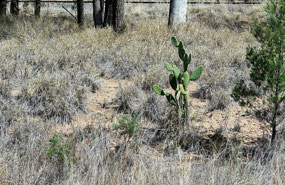
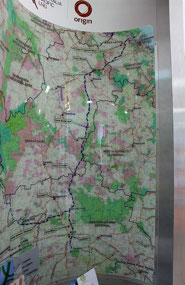
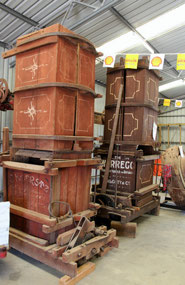
2025-05-22